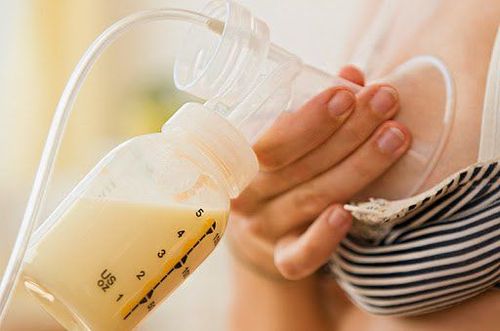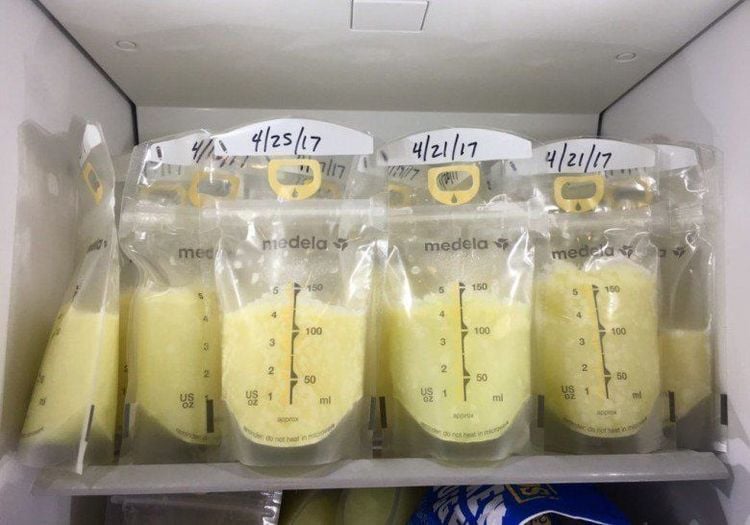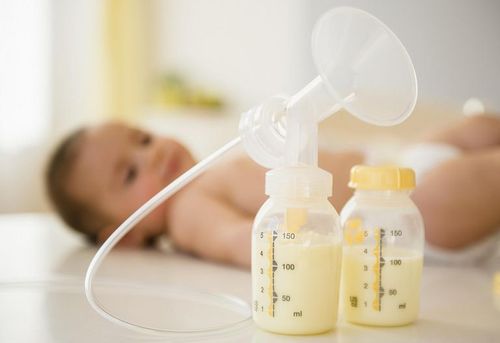This is an automatically translated article.
In most cases, you don't need to worry when your breast milk smells bad or it's sour. Breast milk changes in taste and appearance depending on diet, medications, and storage. No matter what it tastes like, breast milk is always the perfect food for babies.The article was professionally consulted with Master, Doctor Doan Ngoc Quynh Tram - Department of Pediatrics - Neonatology - Vinmec Nha Trang International General Hospital.
1. The smell and taste of breast milk is different for each person
At birth, babies are able to recognize and be comforted by the unique smell and taste of breast milk. This is because the amniotic fluid that nourishes the baby during pregnancy also tastes similar to breast milk. Scientists have even found that the pain of newborns can be relieved when exposed to the smell of mother's milk. For babies, mother's milk is sweet, nutritious and unique.The taste of your milk will depend on the body, unlike any other mother and will vary based on many factors. However, many people still wonder how good breast milk is? According to experts, normal breast milk will be milky white or slightly yellow, with a characteristic aroma. Depending on the stage, the color of breast milk changes as follows:
Colostrum: The milk that appears at the end of pregnancy and the first days when the baby is born. Colostrum contains a lot of beta-carotene, which gives breast milk its light yellow and orange color. Transitional milk: Occurs after colostrum, when breast milk is more secreted and gradually white. Mature milk: Occurs 2 weeks after giving birth. The first milk is pale green or turns white in color. After a few feedings, the breast milk begins to thicken. Towards the end, mature milk will be white or milky yellow. Thus, the color of breast milk will depend on different stages, the taste will also change based on location and many other factors.
SEE ALSO: How to "call" breast milk to many

2. Things that can affect the smell, taste and appearance of breast milk
2.1. Food and medicine
Milk can taste different, depending on your meal. For example, strong spices (pepper, chili, garlic) can easily alter the taste of breast milk, causing a similar strong odor. Meanwhile, canned and processed foods are very high in sodium, which gives breast milk a salty taste. And bananas, cereals and fruits are not only nutritious and help milk, but also make milk more delicious.According to a study, at the beginning of the weaning period, breastfed babies tend to prefer a wider variety of foods and flavors than formula-fed babies. In addition, some medications can also affect the smell and taste of breast milk.
2.2. Preservation techniques
How breast milk is stored can affect its smell, taste, and appearance. You may notice when you leave breast milk at room temperature or in the refrigerator, it begins to separate in layers. This does not mean that the milk has gone bad, but simply that the cream layer separates from the water and floats to the top. Just rotate the container gently to mix and you are ready to feed your baby.2.3. Frozen habit
Frozen breast milk and thawed breast milk can greatly affect taste. Some mothers find that after thawing, breast milk has an unpleasant odor, such as soapy smell or even sour breast milk, however this is normal.SEE ALSO: Signs of spoiled breast milk

3. How to fix bad smell of breast milk
Breast milk contains lipase, an enzyme with many benefits. Specifically, this enzyme helps break down the fat in breast milk so that the nutrients dissolve in the fats and fatty acids, thereby protecting the baby from getting sick.Before freezing, the longer milk is kept at room temperature or even in the refrigerator, the more lipase activity it has. Milk with high levels of lipase may have a soapy taste and smell, but will not harm the baby. Most babies don't mind it, but if your baby starts to refuse breast milk (whether it's for the first time or after he's developed a taste preference) you can prevent your breast milk from going sour. and get rid of bad breast milk by doing the following:
Pre-freezing test: Before freezing large amounts of breast milk, you can check for changes in smell and taste caused by lipase. Collect and freeze 1 - 2 bags or small containers of breast milk for at least 5 days and then assess the smell to see if your baby is willing to drink it. Eliminate lipase-induced change in milk during freezing: If during the test freezing your milk changes in taste or smell and your baby refuses to feed, you can heat raw milk before Frozen. Heating milk after it has been frozen will not correct odor and/or taste problems. SEE ALSO: How long can breast milk be stored in the freezer?
Heat the milk as follows:
Heat the milk in a saucepan until small bubbles form around the edge of the pot. Be careful not to boil, but only at about 180°F or 82°C. Turn off the heat and let the milk cool before freezing. Heating raw milk will prevent enzymes that break down fat, preventing unpleasant soapy smells and taste. However, this will reduce some of the beneficial components in breast milk, so it's best to give your baby raw breast milk whenever possible.
Please dial HOTLINE for more information or register for an appointment HERE. Download MyVinmec app to make appointments faster and to manage your bookings easily.
Reference source: medela.us














